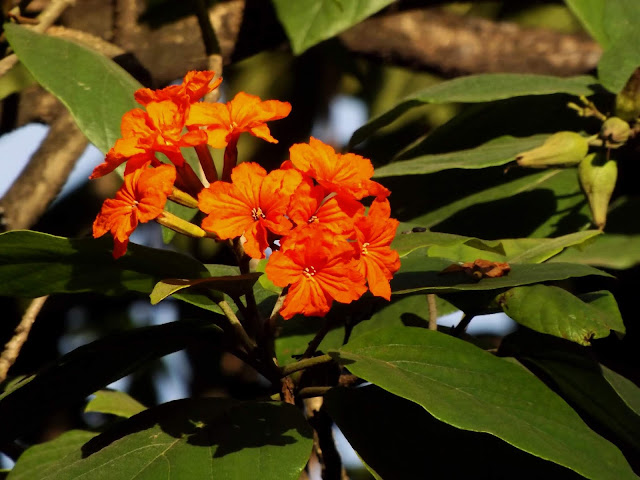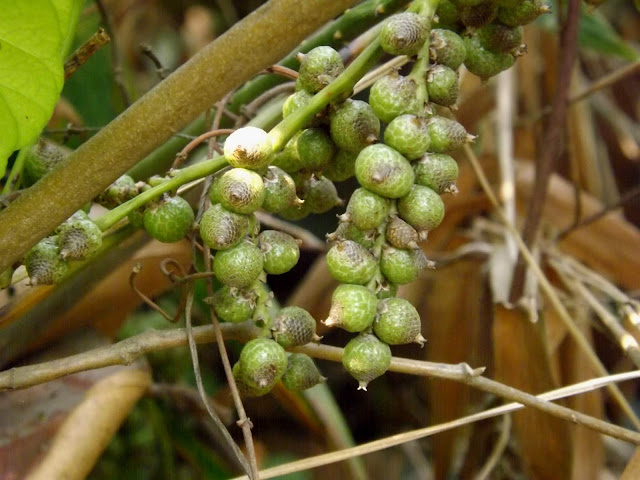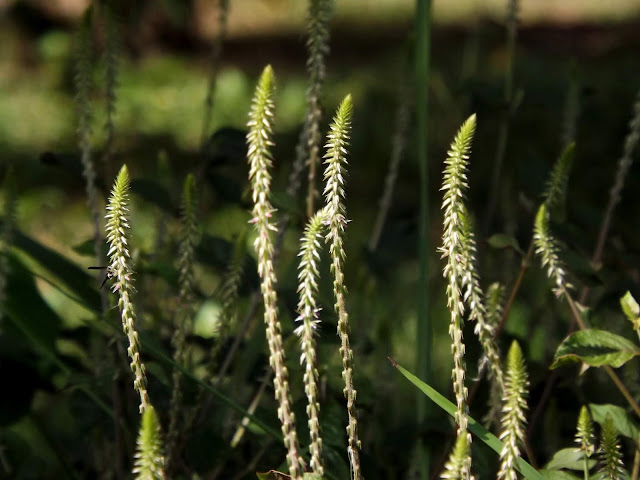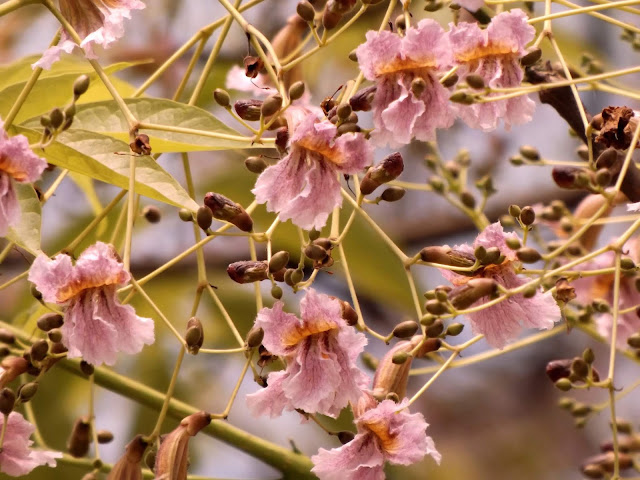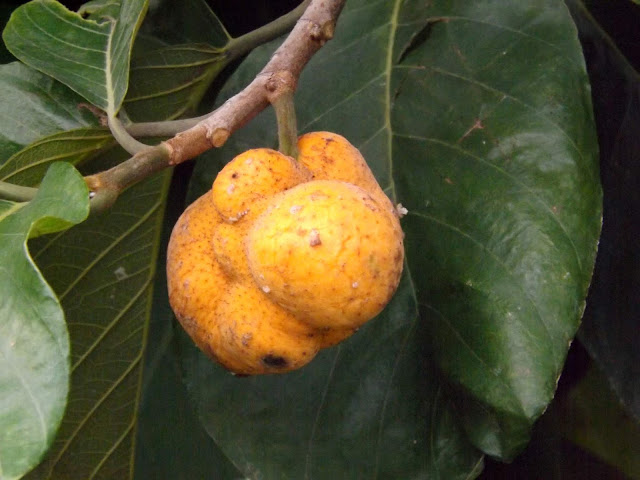Kajuput or Weeping paperbark, Melaleuca leucadendra

Kajuput or Weeping paperbark ( Melaleuca leucadendra , family: Myrtaceae) is a medium-sized evergreen tree with narrow and drooping branches, up to 30 m. in height. Bark is thick and white and it has papery scales all over its body. It relieves papery scales all the year round. The beautiful tree is native to Malaysia, Indonesia, Papua New Guinea & Australia. The exotic tree is planted in Parks and botanical gardens in Bangladesh. Leaves are linear, lanceolate, light green, 10-15 cm long & 1-2 cm wide. Flowers are borne in spike florescence, florets are small, sessile, creamy white, 8-15 cm long. Flowers bloom in June-July. Fruit is capsule with thin skin. Seeds numerous. The flowers and fruits are very much like a Bottlebrush . Propagation is by seeds and cuttings. It is difficult to collect seedlings from the sown seeds; it probably needs the help of a special fungus. Its bark's juice is used as germicide. Oil made from it used
